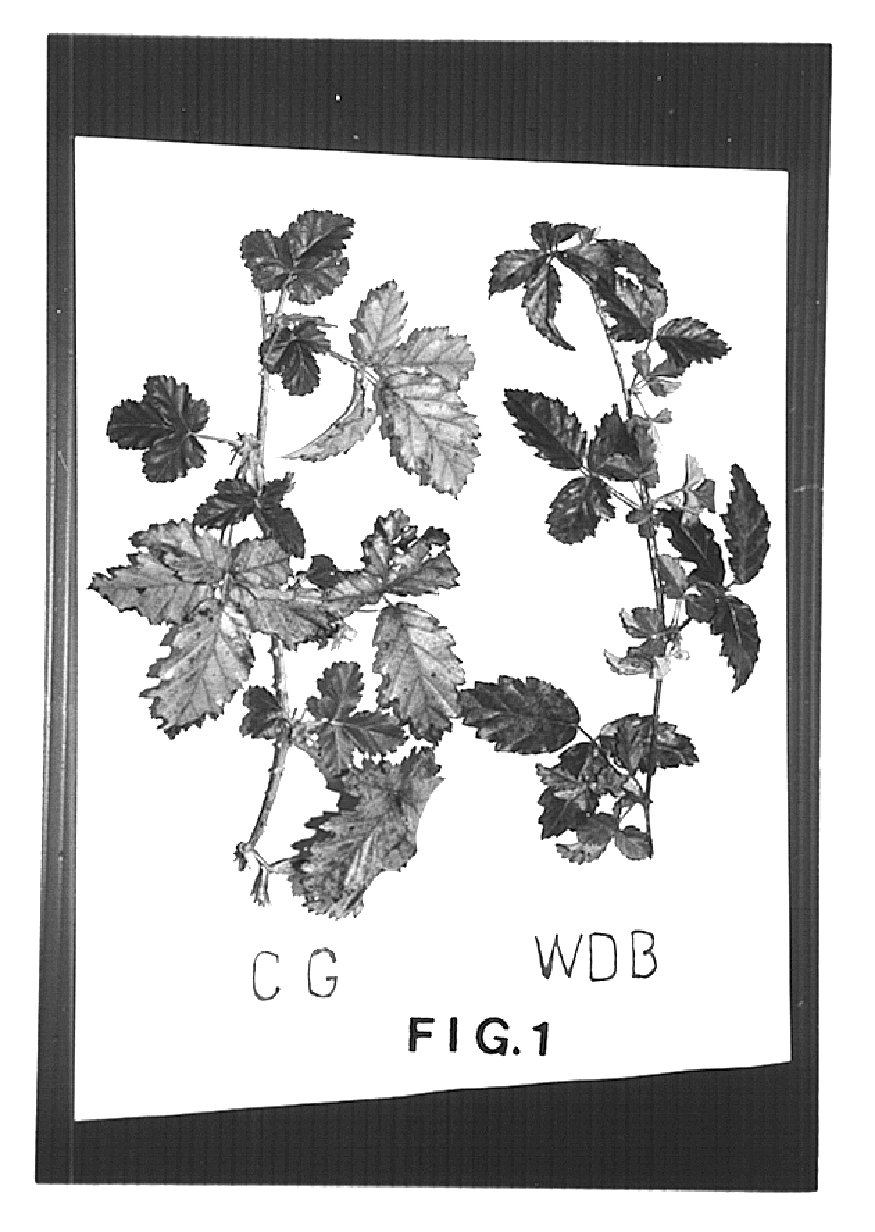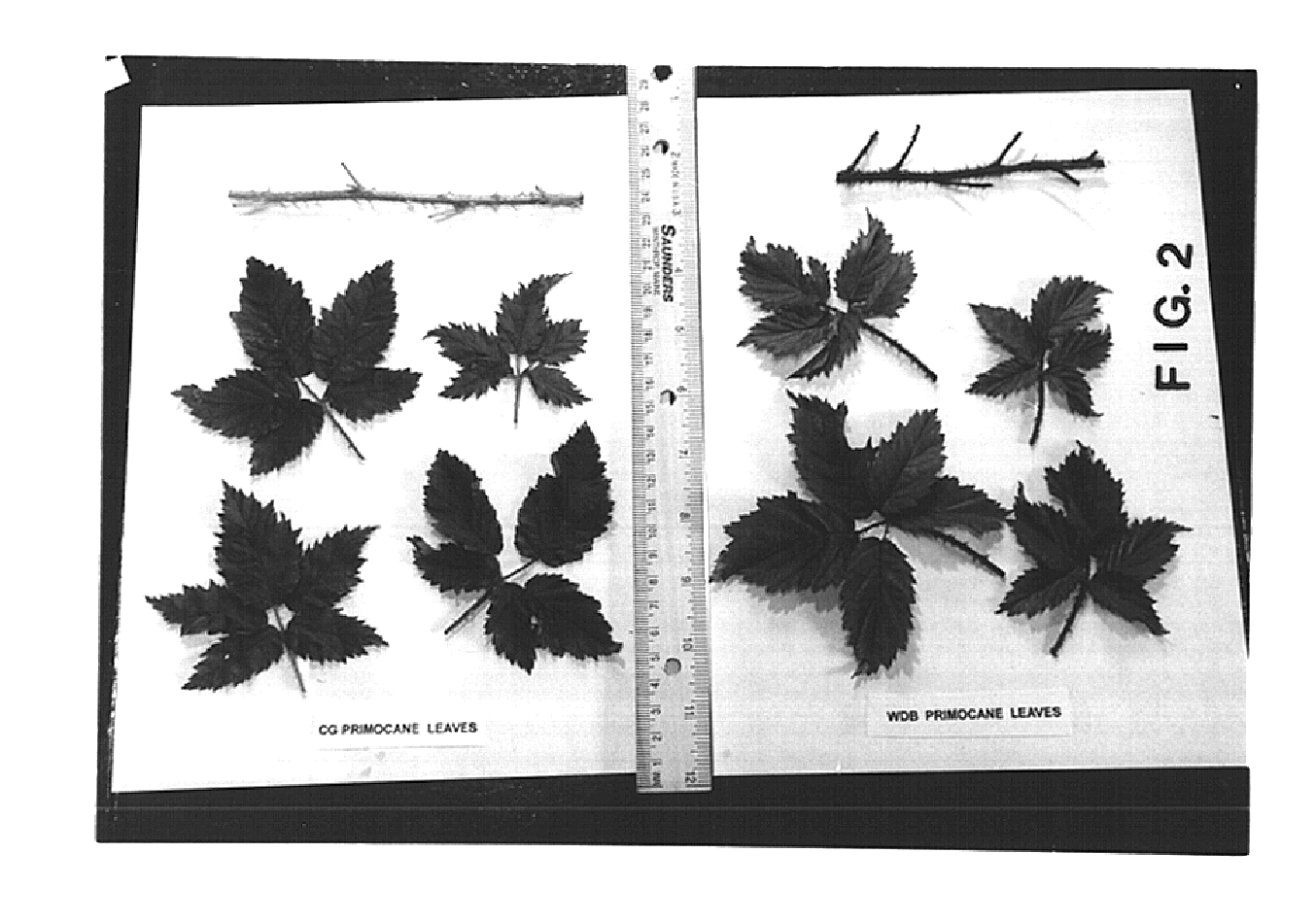Blackberry plant named 'Clark Gold'
a technology of blackberry and plant, applied in the field of blackberry plant namedclark gold, can solve the problem of no commercial blackberry varieties with yellow fruits
- Summary
- Abstract
- Description
- Claims
- Application Information
AI Technical Summary
Benefits of technology
Problems solved by technology
Method used
Image
Examples
Embodiment Construction
FIG. 1 shows winter foliage of `Clark Gold` (CG) and Rubus trivialis, the wild dewberry(WDB).
FIG. 2 shows primocane leaves (5-foliate) of `Clark Gold` (CG) and Rubus trivialis, the wild dewberry (WDB).
FIG. 3 shows floricane leaves (3-foliate) of `Clark Gold` (CG) and Rubus trivialis, the wild dewberry (WDB).
FIG. 4 shows flowers and petal numbers of flowers of `Clark Gold` (CG) and Rubus trivialis, the wild dewberry (WDB).
FIG. 5 shows shape and size of flowers and calyx of `Clark Gold` (CG) and Rubus trivialis, the wild dewberry (WDB).
FIG. 6 shows yellow fruit of `Clark Gold` (CG) and normal black fruit of Rubus trivialis, the wild dewberry (WDB).
DETAILED DESCRIPTION OF THE NEW VARIETY
The descriptions reported herein are from specimens grown in Jackson County, Tex. Color data are presented in Royal Horticultural Society (R.H.S.) Colour Chart designations. Where dimensions, sizes, colors, and other characteristics are given, it is to be understood that such characteristics are approxi...
PUM
 Login to View More
Login to View More Abstract
Description
Claims
Application Information
 Login to View More
Login to View More - R&D
- Intellectual Property
- Life Sciences
- Materials
- Tech Scout
- Unparalleled Data Quality
- Higher Quality Content
- 60% Fewer Hallucinations
Browse by: Latest US Patents, China's latest patents, Technical Efficacy Thesaurus, Application Domain, Technology Topic, Popular Technical Reports.
© 2025 PatSnap. All rights reserved.Legal|Privacy policy|Modern Slavery Act Transparency Statement|Sitemap|About US| Contact US: help@patsnap.com



